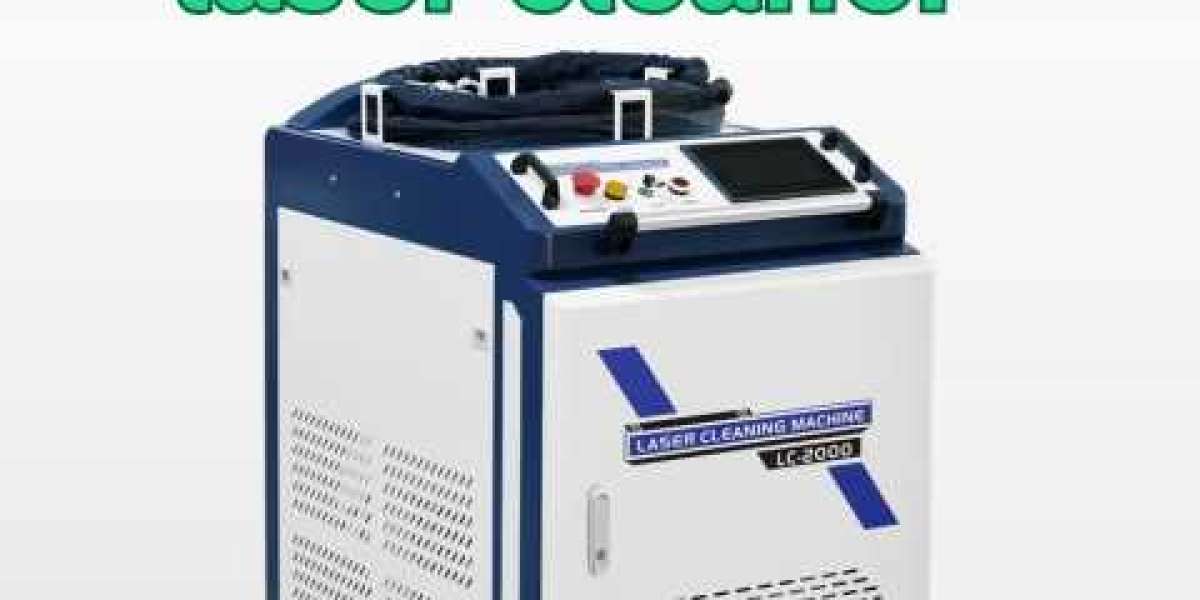In recent years, laser cleaner technology has emerged as a revolutionary method for removing contaminants, rust, paint, and other unwanted substances from various surfaces. Unlike traditional cleaning methods that involve abrasive techniques or chemicals, laser cleaning offers a non-contact, environmentally friendly, and highly precise solution. In this guide, we'll delve into the intricacies of laser cleaner technology, its applications, benefits, and how it's transforming industries worldwide.
Understanding Laser Cleaning Technology: laser cleaner utilizes high-intensity laser beams to remove surface contaminants through a process called laser ablation. During laser ablation, the energy from the laser beam is absorbed by the contaminant, causing it to vaporize or be ejected from the surface, leaving behind a clean substrate. This process is highly controlled, allowing for precise cleaning without damaging the underlying material.
Key Components of a Laser Cleaning System:
- Laser Source: The heart of the system, the laser source generates the high-intensity beam needed for cleaning. Common types of lasers used include fiber lasers, pulsed lasers, and continuous-wave lasers.
- Optics: Optics components such as lenses, mirrors, and scanners direct and focus the laser beam onto the target surface.
- Control System: Advanced control systems regulate parameters such as laser power, pulse duration, and scanning speed to achieve optimal cleaning results.
- Safety Measures: Laser cleaning systems incorporate safety features such as enclosures, interlocks, and emission monitoring to ensure operator safety.
Applications of Laser Cleaning:
- Rust and Paint Removal: Laser cleaning effectively removes rust, paint, and coatings from metal surfaces without causing damage or distortion, making it ideal for automotive restoration, ship maintenance, and historic preservation.
- Surface Preparation: In industries such as aerospace and electronics manufacturing, laser cleaning is used to prepare surfaces for bonding, welding, or painting by removing contaminants and oxides.
- Cultural Heritage Conservation: Laser cleaning offers a gentle and precise method for restoring delicate artifacts, sculptures, and historical monuments without causing damage to the original material.
- Industrial Maintenance: From cleaning industrial machinery and equipment to degreasing surfaces in food processing plants, laser cleaning improves efficiency and reduces downtime in various industrial applications.
Benefits of Laser Cleaning:
- Non-abrasive: Unlike abrasive methods such as sandblasting or grinding, laser cleaner does not generate secondary waste or damage the substrate, resulting in cost savings and environmental benefits.
- Precision: Laser cleaning offers unparalleled precision, allowing for selective removal of contaminants without affecting the underlying material, intricate details, or surface finish.
- Eco-Friendly: With no chemicals or solvents involved, laser cleaning is environmentally friendly and complies with strict regulatory standards.
- Cost-Effective: Although initial investment costs may be higher than traditional cleaning methods, the long-term benefits of reduced maintenance, labor, and waste disposal expenses make laser cleaning a cost-effective solution.
- Versatility: Laser cleaning can be adapted to various surfaces, shapes, and materials, making it suitable for a wide range of applications across different industries.
Conclusion: Laser cleaner technology represents a paradigm shift in surface cleaning and maintenance, offering unmatched precision, efficiency, and environmental sustainability. As industries continue to embrace this innovative solution, the possibilities for applications and advancements in laser cleaning technology are limitless. Whether it's restoring historic artifacts, maintaining industrial equipment, or preparing surfaces for critical processes, laser cleaner is paving the way for a cleaner, safer, and more sustainable future.



